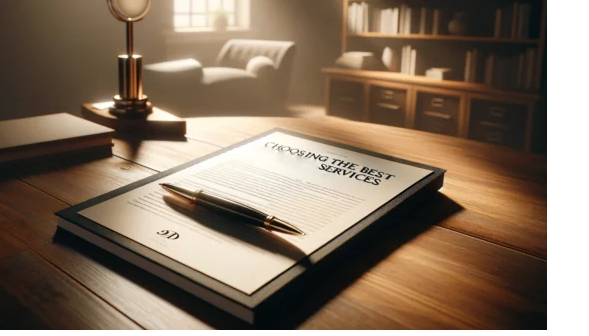Getting your book into bookstores can significantly boost its visibility and credibility, but it comes with challenges and potential financial risks, such as refunds for unsold copies and return costs. Despite these hurdles, having your book on store shelves can be immensely rewarding.
For self-published authors, the journey involves several key steps. Start by ensuring your book is professionally produced, with top-notch editing and an eye-catching cover. Develop a compelling marketing plan that includes promotional materials and author events. Approach local bookstores with a well-prepared pitch, negotiate terms, and consider working with distributors. Building relationships with bookstore owners and participating in events can further enhance your chances of success.
With careful planning and persistence, you can see your book featured and distributed in bookstores, reaping the many benefits that come with it. Let’s dive into how to get your book into bookstores!
The Bookstore Landscape
The bookstore landscape is diverse, encompassing independent bookstores, chain bookstores, and online stores. Independent bookstores are often locally owned and prioritize unique, curated selections, fostering a close-knit community atmosphere. Engaging directly with local bookstore owners can provide a home-court advantage and increase visibility for authors.
Your Publishing Journey Awaits – Start NowChain bookstores, like Barnes & Noble and Books-A-Million, are larger retailers with multiple locations, offering a wide range of titles and often featuring high-traffic events. Online stores, such as Amazon, provide global reach and convenience, though they lack the personal touch of physical stores.
For traditional authors, getting their books into bookstores is usually facilitated by their publishers, who handle distribution, marketing, and relationships with booksellers. Self-published authors, on the other hand, must navigate this process independently. They need to produce high-quality books, create effective marketing strategies, and personally approach bookstores to pitch their titles. Understanding the differences and unique opportunities each type of bookstore offers can help self-published authors tailor their approach and maximize their chances of success.
Preparing Your Self Published Book for Retail
Preparing your book for retail is a crucial step to ensure it stands out on bookstore shelves and appeals to potential buyers. The first step is ensuring high-quality production. This involves selecting the right printing options, using durable materials, and ensuring that the layout is professional and appealing. A well-produced book not only attracts readers but also convinces bookstore owners of its sellability.
Professional editing and cover design are equally important. A meticulously edited book enhances readability and credibility, while a captivating cover design grabs attention and conveys the essence of your book. Investing in professional services for both editing and cover design can significantly increase your book’s chances of success in a competitive market.
Setting the right retail price and wholesale discount is another critical aspect. The retail price should reflect the book’s value while being competitive within its genre. It’s important to research similar titles to find an appropriate price point. Offering a standard wholesale discount, typically around 40-55%, makes your book more attractive to bookstores as it allows them to make a profit. Additionally, understanding and setting terms for returns can be crucial, as many bookstores expect the ability to return unsold copies.
Creating a Marketing Plan
Developing a strong marketing plan is crucial for getting your book noticed and sold in bookstores. Start with high-quality promotional materials like bookmarks, flyers, posters, and press kits. These materials should effectively showcase your book and make a strong impression on bookstore owners and potential readers.
Organize author events and book signings at local bookstores to connect with readers and generate buzz. Promote these events through local media, social media, and community networks to ensure a good turnout. These events are also great for building relationships with bookstore staff and patrons.
In today’s digital age, maintaining a professional author website and engaging with readers on social media is essential. Share updates, behind-the-scenes content, and interact with your audience regularly. Starting a blog or newsletter can further connect you with readers and enhance your credibility as an author.
Finally, develop a local author reputation by participating in community events, joining local author groups, and collaborating with other writers and influencers. Building a strong local presence boosts your book’s visibility and appeal to bookstores, making them more likely to stock your book.
Approaching Local Bookstores
Approaching local bookstores is a crucial step in getting your book onto their shelves. Begin by researching local independent bookstores to understand their inventory preferences and customer base. Visit the stores, browse their selections, and note the types of books they stock. Creating a list of target stores with contact information and key details will help you tailor your approach.
Craft a compelling pitch to capture the interest of bookstore owners. Keep it concise and persuasive, highlighting the unique aspects of your book and why it will appeal to their customers. Include information about your book’s genre, target audience, and any relevant accolades or endorsements. Emphasize how your book fits with the store’s current offerings and how it can attract more customers.
Support your pitch with review copies and promotional materials. Offer a complimentary review copy of your book so bookstore owners can experience its quality firsthand. Include professional promotional materials like press kits, flyers, and bookmarks, containing key information about your book, your author bio, and how to purchase or order additional copies. This approach not only demonstrates your professionalism but also makes it easier for bookstores to see the potential in stocking your book.
Negotiating Terms with Bookstores
For a self-published author, it’s important to understand the two main types of arrangements: consignment basis and outright purchase. Under a consignment basis, the bookstore agrees to display and sell your book, but you retain ownership until it is sold. You get paid only when the book sells, and unsold copies can be returned. This arrangement reduces the risk for bookstores, making them more willing to stock self-published books. In an outright purchase, the bookstore buys copies of your book upfront, taking on the risk of selling them. This can be more challenging to secure but provides immediate revenue for you.
Your Publishing Journey Awaits – Start NowDiscussing wholesale discounts and return policies is essential during negotiations. Wholesale discounts typically range from 40% to 55% off the retail price, allowing bookstores to make a profit. Be clear about your discount structure and be prepared to negotiate. Additionally, many bookstores expect a return policy, allowing them to return unsold books for a refund or credit. Having a clear, fair return policy can make your book more attractive to bookstores.
Ensuring fair terms for both parties is key to a successful partnership. Be transparent about your pricing, discounts, and return policies. Aim for a win-win situation where the bookstore feels confident in stocking your book, and you secure favorable terms that support your sales goals. Maintaining open communication and flexibility can help build long-lasting relationships with bookstore owners, ultimately benefiting both your book sales and their business.
Working with Distributors
Book distributors play a crucial role in getting your book into stores and helping to sell books, acting as intermediaries between authors and bookstores. They have established relationships with a wide network of bookstores, making it easier for your book to gain exposure and shelf space. Distributors handle the logistics of shipping and returns, allowing you to focus on writing and marketing your book. Their expertise and reach can significantly enhance the visibility and sales potential of your self-published book.
Choosing the right distributor for self-published books requires careful consideration. Look for distributors that specialize in working with indie authors and self-published titles. Some well-known distributors for self-published books include IngramSpark, Baker & Taylor, and Independent Publishers Group (IPG). Evaluate their distribution networks, fees, and the services they offer. Reading reviews and seeking recommendations from other self-published authors can also help you make an informed decision.
Submitting your book to distributors typically involves a straightforward process. Start by creating an account with the chosen distributor and following their submission guidelines. You’ll need to provide essential details such as your book’s ISBN, metadata, pricing, and cover image. Ensure your book meets the distributor’s quality standards, including professional editing and formatting. Some distributors may also require a sample or review copy of your book.
Leveraging Author Events and Signings
Organizing and promoting book signings is an effective way to boost your book’s visibility and sales. Start by reaching out to local bookstores and proposing a signing event. Coordinate with the bookstore on a suitable date and time, and provide them with promotional materials to advertise the event. Promote the signing through your social media channels, email newsletters, and local media outlets to ensure a good turnout.
Engaging with readers during these events is crucial. Be personable, approachable, and ready to discuss your book and writing process. Take the time to chat with attendees, sign copies, and maybe even do a short reading. Building a local following through these interactions can create loyal fans who will spread the word about your book.
Utilizing events to boost bookstore relationships is another key benefit. Successful events demonstrate your commitment to supporting the bookstore and can lead to future opportunities. By helping drive traffic and sales, you strengthen your partnership with the bookstore, increasing the likelihood they will continue to stock your book and support your future releases.
Building Relationships with Bookstore Owners
Building personal connections with bookstore staff is crucial for the success of your book in their store. Strong relationships can lead to better placement, more enthusiastic recommendations, and increased support for your events. Bookstore owners and staff are more likely to champion a book if they feel a genuine connection with the author.
Maintaining a positive relationship involves regular, respectful communication. Keep in touch with updates about your book and any new releases. Be responsive and grateful for their support. Personal touches, like handwritten thank-you notes or small tokens of appreciation, can go a long way in building goodwill.
Supporting the bookstore beyond your book is also important. Promote the store on your social media, encourage your followers to shop there, and participate in store events, even those not directly related to your book. Demonstrating that you value and support the bookstore’s overall success helps build a mutually beneficial relationship, increasing the likelihood that they will continue to support you and your work.
Expanding to Chain Bookstores
Expanding to chain bookstores involves navigating a different landscape compared to independent bookstores. Indie bookstores often prioritize local authors, unique titles, and curated selections, fostering close-knit community relationships. Chain bookstores, such as Barnes & Noble and Books-A-Million, operate on a larger scale with a broader, more standardized inventory. They often have more stringent corporate policies and procedures for stocking books.
To get noticed by large retailers, your book needs to stand out in terms of quality and marketability. Start by ensuring your book meets industry standards for editing, design, and formatting. Strong sales and positive reviews can make your book more appealing to chain buyers. Consider gaining traction in local stores and online to build a proven sales record before approaching larger retailers.
Navigating corporate requirements and policies involves understanding and complying with their specific submission guidelines. Research the requirements for each chain bookstore, which may include having a certain number of reviews, a professional cover design, and an ISBN. Many chain bookstores work with distributors like IngramSpark or Baker & Taylor, so having your book available through these channels can be beneficial. Be prepared to provide detailed sales data, marketing plans, and promotional support to demonstrate your book’s potential success in their stores.
Your Publishing Journey Awaits – Start NowBuilding relationships with key contacts within the chain bookstores can also be advantageous. Attend industry events, book fairs, and conferences where you can network with buyers and decision-makers. Persistence, professionalism, and a strong book offering are key to successfully expanding to chain bookstores.
Monitoring Sales and Handling Unsold Books
Monitoring sales and understanding performance are essential for the continued success of your book. Utilize sales tracking tools and reports provided by your distributor or retailer to keep an eye on how your book is performing in various stores. Regularly review these sales figures to identify trends, peak sales periods, and any potential issues. Understanding which marketing efforts are driving sales can help you refine your strategies for better results.
Handling returns and unsold inventory is a common aspect of the book business. Many bookstores operate on a returnable basis, meaning they can return unsold books to you or your distributor. Plan for this by setting aside a budget for potential returns and unsold stock. Work with your distributor to manage returns efficiently, and explore options like discount sales, donations, or special promotions to move excess inventory.
Adjusting strategies based on sales data is crucial for maintaining and increasing sales. If a particular marketing campaign or sales channel isn’t performing well, analyze the data to understand why and make necessary changes. Conversely, if you notice a strategy that’s working particularly well, consider investing more resources into it. Continuously testing and refining your marketing and sales approaches will help you stay adaptable and responsive to the market, ensuring your book remains successful over time.
By keeping a close watch on your sales performance and being proactive in handling unsold books, you can make informed decisions that support the long-term success of your book.
Your Path to Bookstore Success
Getting your book into bookstores involves several key steps: ensuring high-quality production, creating a robust marketing plan, approaching local bookstores with a compelling pitch, negotiating fair terms, and potentially working with distributors. Organizing author events, building relationships with bookstore owners, expanding to chain bookstores, and monitoring sales are also crucial.
By following these steps, self-published authors can achieve the visibility and credibility that bookstore presence offers. Take action, stay persistent, and embrace these strategies to see your book on bookstore shelves and in the hands of eager readers. Your hard work and dedication can lead to significant success, transforming your dream of being a recognized author into a reality.
Spines
Spines revolutionizes book publishing with its unparalleled marketing reach and global distribution. Our streamlined process transforms manuscripts into published books in under 30 days. With budget-friendly plans, significantly lower than industry standards, we leverage AI-driven cost efficiency to keep prices down. Our dedicated support ensures a smooth journey, guided by your personal production manager.
Spines caters to all formats, including Print-on-Demand, eBooks, and Audiobooks, ensuring your work reaches every audience. Our global distribution network spans 100+ channels, including Amazon and Barnes & Noble, echoing your story worldwide. From proofreading to cover design, we handle every aspect, welcoming both new and established authors to achieve publishing success.








